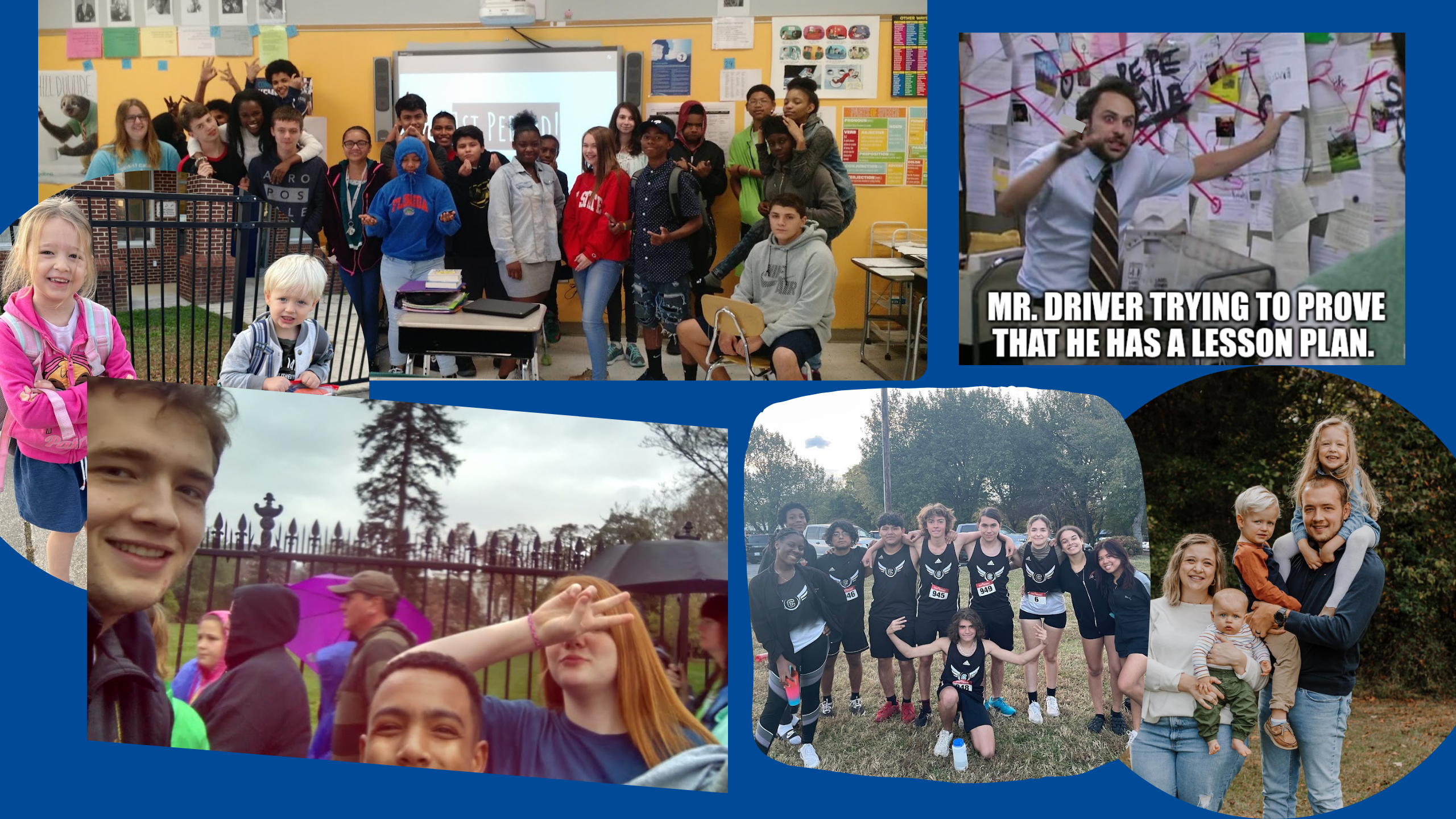Part of our job as educators is to inspire our students. Of course. But that inspiration can take many forms, so perhaps a more accurate way of describing the work of “inspiring” is pushing students toward higher ideas–about themselves, their community, the world, whatever.
We’ve all found ourselves seeking out just the right voice to provide that for our students, and oftentimes that voice comes in the form of experts using platforms like TED to provide brief, engaging talks about the real world and how we can make it better. But with thousands of videos on their site, with most geared toward decidedly adult audiences or really specific niches, it’s difficult to find the ones that will have the greatest impact on students. That’s why I’ve put together this list of what I consider to be the top tier of TED Talks for use in middle and high school classrooms.
I’ll start with my short list of unmissable videos:
#1 Clint Smith’s “The Danger of Silence”

The speaker: A polymath poet who also holds an education PhD, a New Yorker writer, and co-host of the Podcast, “Pod Save the People.”
Why it’s worth showing: It’s convicting. A brief, slam-poetry-esque piece about keeping quiet when one is in a position to take a stand. A valuable elaboration on Dr. King’s famed, “Silence of our friends” maxim.
Other work: Spoken word poem “My Father Is an Oyster,” “The Terrible Costs of Selective Empathy”
#2 Jorge Ramos’s “Why Journalists Have an Obligation to Challenge Power”

The speaker: Perhaps the most important journalist in the world, Ramos has a fascinating biography coming from Mexico to the U.S. as an “illegal immigrant,” eventually rising to his position as one of the most trusted voices in the Spanish and English-speaking worlds.
Why it’s worth showing: It’s empowering. Ramos shares his incredible life story as it leads to the climactic confrontation between himself and then-presidential candidate Donald Trump. All the while, he provides a compelling argument for the place of challenging journalism, heightened civic responsibility, and the changing definition of “America.” Also, he speaks almost entirely in Spanish during his presentation, which I think is a huge bonus. It forces your non-Spanish-speaking students to read the subtitles and pay attention if they actually want to understand what he is saying. This can also be an empowering moment for your Spanish-speaking students.
Other work: The Daily Show Interview
#3 Chris Urmson’s “How a Driverless Car Sees the Road”
The speaker: One of the senior members of Google’s original driverless cars team, Urmson is considered a pioneer in the engineering world.
Why it’s worth watching: It’s eye-opening. Slightly dated at this point, but the visuals are the story here. Urmson shows what a computer “sees” when a self-driving car is navigating the open road, offering plainspeak commentary and unique insight along the way. A really strong candidate to be shown in any science class.
Other work: Interview with The Atlantic
#4 Angela Lee Duckworth’s “Grit: The Power of Passion and Perserverence”
The speaker: A psychologist and popular science writer by trade, Duckworth traces a career back through the business world and middle school classroom. This unique career path gives her the perfect perspective to study what makes people successful.
Why it’s worth watching: It’s inspiring–in a really practical way. She lays out a concise scientific argument for the value of self-belief and determination.
Other work: NYT Article
#5 Reggie Watt’s “Beats that Defy Boxes”

The speaker: I’m personally of the opinion that Watts is a musician first and a comedian second. But he’s one of the few artists in the world who truly cannot be put into any traditional boxes. A unique treasure that should be required reading for every student in the U.S., if only as a way of maintaining their imaginations into late adolescence.
Why it’s worth watching: It’s indescribable-ish. Well, I’ll do my best to describe what is essentially an indescribable talk: Watts’s talk is simultaneously a comedian’s satire of TED-style intellectualism as well as a musician’s attempt to blend and bend every genre of popular music into a single performance. It has that rare, magical “here’s something weird but really smart, kids; deal with it” quality that every teacher loves to find.
Other work: Rolling Stone Interview
#6 Poppy Crum’s “Technology that Knows What You’re Feeling”
The speaker: A Stanford professor and leading voice in the field of sensory perception. Like Urmson, she exists on the edge of known science at the moment, and her thoughts are really important for viewing the next decade of technological advancements.
Why it’s worth watching: It’s unexpected. While the driverless car video above takes a really well-known technology and breaks it down to its component parts, this talk centers around a nearly unimaginable technology and explains its potential significance to the real-world.
Other work: PCMag Interview
#7 James Bridle’s “The Nightmare Videos of Children’s Youtube–and What’s Wrong with the Internet Today”
The speaker: A “digital artist,” Bridle diagrams the intersection of the “networked” world and the offline, physical realm. He looks at real-world issues like deportation, early childhood development, and domestic security with the perspective of a technological historian.
Why it’s worth watching: It’s skin-crawl creepy. Bridle investigates a seedy part of the internet age in a progressively troubling look at what happens when unbridled connectivity and the pursuit of profit combine in the hands of American toddlers.
Other work: Vanity Fair Interview
Now, the longlist:
Race, Gender, and Equality
“The Urgency of Intersectionality” by Kimberle Crenshaw
Why? It’s like transporting your students to a college classroom with an amazing and thoughtful professor for a quarter hour. Essentially, she thinks through the difficult combination of racial and gender bias.
Run time: 18:30
“The Beauty and Diversity of Muslim Life” by Bassam Tariq
Why? It’s a fast way of jumping into religious difference and valuing diversity. Tariq talks through his journey of visiting a hundred wildly different American mosques.
Run time: 4:38
“How to Raise a Black Son in America” by Clint Smith
Why? It’s a passionate personal exploration of the place of young black men (and the difficult decisions of their parents) in America.
Run time: 5:13
Science, Technology, Engineering, and Design
“A New Way to Remove C02 from the Atmosphere” by Jennifer Wilcox
Why? It’s a problem-based teacher’s dream come true. Wilcox talks through the potential use of tree-like processes to combat global warming.
Run time: 14:15
“The Tiny Creature that Secretly Powers the Planet” by Penny Chisholm
Why? It’s an attempt to provide an end answer to the question of “how does the world work?” Chisholm diagrams the influence of a little-known species that may hold beneficial genetic information in the fight to reduce dependence on fossil fuels.
Run time: 16:37
“How Syria’s Architecture Laid the Foundation for Brutal War” by Marwa Al-Sabouni
Why? It’s an analysis of civil war as a result of architectural decision-making. Al-Sabouni makes one of the most unlikely connections imaginable feel tragically inevitable by the end of her talk.
Run time: 10:12
“The Beauty of Data Vizualization” by David McCandless
Why? It’s a celebration of the marriage between math and visual art.
Run time: 18:10
“The Incredible Potential of Flexible, Soft Robots” by Giada Gerboni

Why? It’s really weird and really cool.
Run time: 9:27
“How Amazon, Apple, Facebook, and Google Manipulate Our Emotions” by Scott Galloway (explicit)
Why? It’s an aggressive and brutally honest view of consumerism and the big 4 technology companies in the world today.
Run time: 19:05
Societal Change, Power, Conflict & Political Improvement
“Why Ordinary People Need to Understand Power” by Eric Liu
Why? It’s an earnest attempt to “make civics sexy again.” Liu provides a talk that even the most lethargic social studies student will find entertaining.
Run time: 17:14

